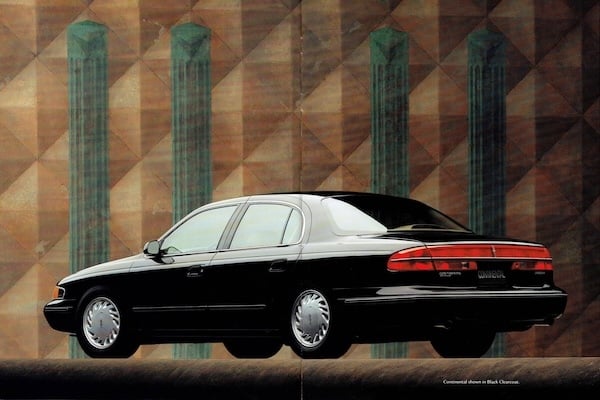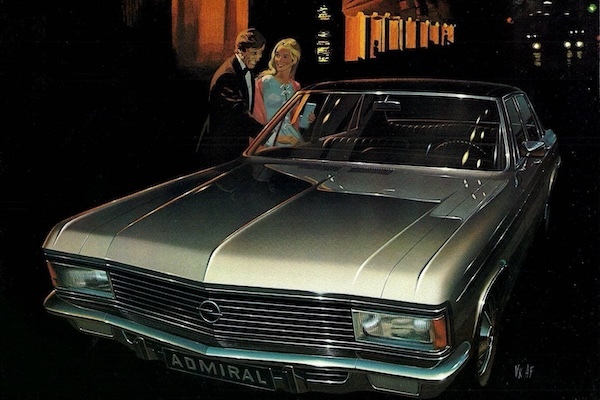It is a cruel fact of the automotive world that prestige cannot be bought. It must be earned over time. Lancia was once the extravagant man’s choice and an engineer’s marque of honour and it learned this the hard way once the 21st century rolled in. The Thesis, their final grand saloon, was neither lacking in quality or character, in fact, it was possibly the most technically advanced and elegant Italian car of its generation. Unfortunately, it failed.
Competitive Landscape
The climate at the time was as tense as ever and I’m not talking about the Italian weather. The year was 2001. Mercedes-Benz had reasserted itself in the luxury saloon market with the new bold W220 S-Class, BMW’s even more bold E65 7-Series was about to explode onto the scene, polarising opinions with its flame-surfaced bodywork and infotainment complexity. Audi, meanwhile, was perfecting the more subtle, but equally competent D3 generation A8. On the less premium side of things, the market was brimmed – the Alfa Romeo 166, Volvo S80 and its rivals had their fair share in the European market. Naturally, a question arises. Is there any room for a proudly idiosyncratic, painfully Italian and objectively expensive machine like the Thesis?
Design
Lancia thought there was plenty. Unveiled at the Geneva Motor Show in 2001, the Thesis looked unlike anything else on sale. Drawing inspiration from the stunning 1998 Lancia Diàlogos concept, it arrived like a vision of a parallel universe. Its designer, Enrico Fumia (who also penned the Alfa Romeo 164), gave it a commanding front end with chrome grille slats that evoked the baroque splendour of pre-war Lancias. At the rear, vertical tail lamps added visual height.
On The Road
The car rode on the Type 841 platform, a wholly unique architecture not shared with Fiat, Alfa Romeo, or anyone else. And this was probably its first mistake. Platform exclusivity in the modern automotive industry is a luxury few can afford, unless you’re Rolls-Royce or Bentley. Fiat, even in those headier days of ambition, could scarcely justify the expense. But they did it anyway, and in doing so, they created a car that was remarkably refined.
The Thesis road with a sophisticated multi-link setup at the front and rear, dampened by Sachs adaptive units with continuous damping control, a system as advanced as anything found on an S-Class. It had fluidity and composure that belied its mass, and in some conditions, surpassed its German rivals. The steering was delicately weighted, communicative at speed and relaxing in town. It was a car that eschewed vulgar sportiness in favour of cultivated serenity. A true gentleman’s carriage, if you will.
Powertrains were varied and unexpectedly Italian. Buyers could choose from a range of five engines: two petrol V6s, including the charismatic 3.0-liter 24-valve Busso unit and a 3.2-liter version, a 2 liter and 2.4-liter five-cylinder petrol, and of course, a diesel, with 20 valves, spread across five cylinders. The transmission was a five-speed automatic, with a six-speed ZF added later on. Manual gearboxes were offered, but few chose them, and rightly so, since the Thesis was never a car to be hurried.
Inside, every new owner was greeted with what could only be described as an Italian living room. Poltrona Frau leather, real wood inlays, and soft ambient lighting gave the cabin warmth and richness sorely lacking in its rivals. Looking back at the interior today, it is oozing with early 2000s Frasurbane aesthetics. The dashboard was dominated by a large central display and a set of beautifully backlit charming gauges. Lancia even included features like adaptive cruise control, keyless entry, and a Bose audio system.
Why It Failed
So, if the car was this good, even by most critical accounts, why did it fail? The answer lies partly in perception. Lancia, by 2002, had all but disappeared from markets outside Italy. In Germany, they were dismissed as unreliable; in the UK, they weren’t sold at all. France was indifferent, and Spain mildly curious. The car journalists of the day, particularly the British ones, tended to view Lancia with a mixture of nostalgic affection and contemporary derision. This wasn’t the Lancia of the Stratos or the Fulvia, they said. It was a badge-engineered Fiat with delusions of grandeur, mostly showing in the wild design.
Even in Italy, the Thesis sold slowly. In its best year, 2002, Lancia moved just under 11,000 units. Over its entire production run, fewer than 17,000 cars found homes. By contrast, Mercedes shifted nearly 500,000 W220 S-Classes during the same period. The Thesis became a ghost on the motorways and a car known only to connoisseurs, who didn’t mind the strange design and odd proportions.
A Classic Modern Classic
And yet, those who did own one often spoke of it with a reverence bordering on fanaticism. They appreciated the Thesis not in spite of its flaws, but because of them. Its anonymity was its greatest strength. It was the anti-7-Series. It didn’t shout about and merely went about its business, supplying its driver and passengers with comfort.
There is also the matter of its symbolic importance. The Thesis was the last true Lancia flagship, conceived, designed and engineered as a Lancia, not as a rebadged Chrysler. It stood for a kind of automotive romanticism that the industry was beginning to forget around the turn of the millennium. The Thesis was built around the idea of feeling.
The Lancia Thesis represents a kind of high-water mark, not just for Lancia, but for a certain kind of car making altogether. One where aesthetics mattered more than algorithms and ride quality trumped lap times at testing facilities. Where luxury was measured in silence, softness, and soul. It is a modern classic, not because it was successful, but because it dared to be different in a world that rewards conformity.
---
Embark on a journey to find your ideal vehicle by browsing through our Car Categories. Or, delve into our Classic Passion Shop for an exciting array of products from our partners, perfect for enthusiasts looking to enhance their collection!














